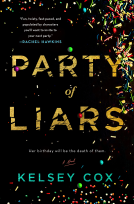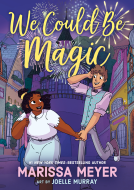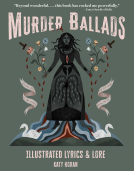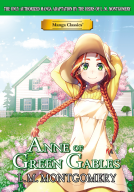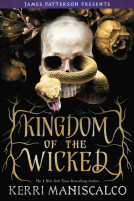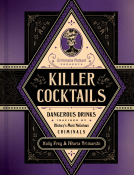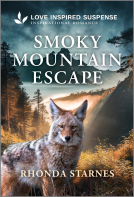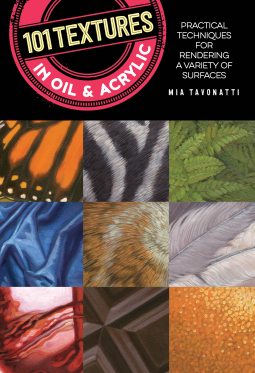
101 Textures in Oil and Acrylic
Practical techniques for rendering a variety of surfaces
by Mia Tavonatti
This title was previously available on NetGalley and is now archived.
Send NetGalley books directly to your Kindle or Kindle app
1
To read on a Kindle or Kindle app, please add kindle@netgalley.com as an approved email address to receive files in your Amazon account. Click here for step-by-step instructions.
2
Also find your Kindle email address within your Amazon account, and enter it here.
Pub Date Dec 18 2018 | Archive Date Jan 22 2019
Quarto Publishing Group – Walter Foster | Walter Foster Publishing
Talking about this book? Use #101texturesInOilAndAcrylic #NetGalley. More hashtag tips!
Description
101 Textures in Oil & Acrylic features step-by-step instructions for mastering a variety of the most common surfaces—sand, water, metals, foliage, wood, bark, fabrics, stone, grass, and many more—in oil and acrylic paint. Each page features two similar textures for readers to paint using the easy-to-follow steps.
Half the battle of achieving precise, realistic results in oil and acrylic painting comes down to one’s ability to accurately render surfaces and textures—a challenging feat for even experienced artists. Although many art instruction books focus on learning to paint specific subjects, many fall short when it comes to offering instruction on techniques that help one capture textures adequately.
In 101 Textures in Oil & Acrylic, experienced and talented artist Mia Tavonatti provides artists with the essential skills required to render realistic surfaces in oil and acrylic. Artists will discover tips and tricks for working with both mediums, as well as a variety of techniques, including blending, layering, working with oil and acrylic mediums, creating an underpainting, and more. In addition to valuable step-by-step instructions, general color recommendations offer a quick start guide. This helpful guide includes an index for fast and easy reference, while a short gallery at the end of the book represents various textures in finished works of art.
With its broad range of coverage, easy-to-follow instruction, and helpful tips, 101 Textures in Oil & Acrylic is a must-have art instruction book for artists of all skill levels, sure to be referenced time and again.
Available Editions
| EDITION | Other Format |
| ISBN | 9781633226869 |
| PRICE | $16.99 (USD) |
Featured Reviews
 Davide F, Reviewer
Davide F, Reviewer
The author explains how to render realistic surfaces in oil and acrylic. in 4 easy-to-follow steps for each of the 101 textures covered by this book.
She uses a variety of techniques and provides helpful tips, too.
This is a must-have for all artists!
101 Textures in Oil and Acrylic shows how to paint fur, hair, fabric, skin, building textures and more. The book is absolutely fantastic and I will try out a few of the new techniques in my next oil painting.
Most of the techniques are shown in 4 steps. Perfect Christmas gift for yourself or a loved one who is an artist!
Thank you so much NetGalley and Quarto Publishing Group for giving me a copy of this book.
These designs are so beautiful and the book really breaks down step by step how to recreate them. You don’t have to have prior knowledge, but it probably wouldn’t hurt. Some of these I can’t wait to try!
This book is very helpful! Mia Tavonatti goes into detaiul about how to paint texttures that range from animal coats to materials for clothings to metals! I was able to understand what she was asking and teh photoes helped me understand what each step looked like. I am really excited to try what I learnedf in this book!
 Beatrice Y, Librarian
Beatrice Y, Librarian
I'm excited to order this book both as an artist and a librarian! I love the layout of the book; types of textures are grouped together for ease of reference, pictures are clear and easy to understand without a lot of unnecessary distraction. I looked through half of it and decided to try painting things I had never considered before. This would be a lovely and useful addition to the collection of any artist or library.
 Pam S, Reviewer
Pam S, Reviewer
I really liked this book and thought it was very useful. It starts with the basics, but afterwards there are SO MANY examples of what you can do with these paints and it gave me so many ideas. If you're a painter using these mediums, it would be very useful to have this book as it opens your mind to some techniques that you might not have thought of. I would definitely recommend it as a source to learn more about oils and acrylics and what possibilities they have.
Thank you to Quarto Publishing Group and NetGalley for a copy of this book in exchange for an honest review.
The range of textures described here is extensive! As with most art books, the first pages are dedicated to the basics - materials and techniques - while the majority of the book focuses on the steps to creating realistic textures in your paintings. In the last few pages, the reader is treated to a few of the artist's pieces showing her expert use of texture. This would be a very useful resource especially for a newer painter and would be a wonderful way to improve their skills.
Thank you to Quarto Publishing Group – Walter Foster and NetGalley for the opportunity to read this book in exchange for my honest review.
 Agnes P, Reviewer
Agnes P, Reviewer
While there are tons of books on painting, it's the first time I read a book dedicated explicitly to the textures in oil and acrylic painting. It's a visual vocabulary, organized very well (people, animals, nature, fabrics, manmade objects, food). Every surface is presented on one page with four step-by-step images and descriptions. Very clear, very neatly presented, this book is highly recommended for every realist artist of any level.
 Cathy G, Reviewer
Cathy G, Reviewer
101 Textures in Oil and Acrylic
Practical techniques for rendering a variety of surfaces
by Mia Tavonatti
Another great addition to an artist’s library with information related to creating painting people, animals, insects, fabrics, textiles, glass, stone, ceramics, wood, metal, food, beverages and nature. I think the one thing that most impacted me, not having studied painting with acrylic or oil paint is that it is so different from working with watercolor. Why? In watercolor you build the color from pale to darker even when you lay down shadow colors to begin with while with acrylic and oil paints you go begin with darker colors and build lighter on top of the dark. Would love to have a copy of this book to do some side-by-side painting in the three mediums to see just how differently one would approach the same subject and how the final product would turn out in all three versions.
Thank you to NetGalley and Quarto Publishing Group – Walter Foster for the ARC – This is my honest review.
5 Stars
This is a wonderful painting guide. There are so many textures for hair, skin, animals, insects, etc. It shows the texture in four stages so you can learn to paint it in layers. Most books just show it and leave the painter to guess how to get there. I loved the detail which allows the painter to succeed. I couldn’t wait to get out my paints to try them.
I received an eBook ARC from NetGalley in exchange for an honest review. This in now way affects my opinions and ratings of this book.
 Leyla J, Reviewer
Leyla J, Reviewer
A really informative book on achieving textures with painting, it is a great starting point for any painter. Traditional in concept, and being so, is a very good step in stone into handling and adding of texture to a painting.
It works on a four step process, and in the four steps in start from the first layer of paint to achieving very realistic look. There are various areas covered from people, animals and insects, fabric and textiles, food and beverage, glass, stone, ceramics, wood and metal and lastly all the aspects of nature from hair to feathers and beyond.
I like this book and found it very useful.
 Deborah W, Reviewer
Deborah W, Reviewer
"101 Textures in Oil and Acrylic" provides instructions on how to produce 101 textures using oil or acrylic paint. The author assumed that the reader knows the basics of painting in oil and acrylic, so she jumped into the step-by-step demonstrations after a brief introduction. The instructions were not specific to either oil or acrylic paint, so you have to know how to adapt her general instructions to the type of paint you're using. She also never described exactly what she meant by "impressionistic" or "painterly" (and different artists mean different things by these terms). However, the pictures for the different steps did a good job of showing what she meant. She didn't usually say if you should let a layer dry or not before going to the next step, which would have been useful information.
The step-by-step demonstrations were basically "use these colors in this order with these techniques to create this texture." She did not describe how to choose the best colors to create a certain texture. But she did use different colors for the demonstrations of similar textures (like the different types of hair), so you can get an idea of how to choose colors from that. Also, she only demonstrated how to do a small section of texture, like fur or skin, and left it up to the reader to correctly apply it to the whole body. While this book is helpful in teaching how to create different textures, it probably wouldn't be as helpful for a beginner as for someone who has some experience already with oil or acrylic paint.
You can see exactly what's covered in the table of contents, but she basically covered people (hair, skin, eye), animals (fur, mane, feathers, etc.), fabrics (tweed, silk, leather, lace, etc.), woven basket, glass, stone, ceramic, wood, metal, various food textures, and nature textures (bark, fern, grass, rain, etc.).
101 Textures in oil and acrylic covers a wide selection of textures.
From people, animals and insects, fabric and textiles, glass, stone, ceramics,wood, metal, food and beverages, to nature.
All the sections are fab but I really enjoyed the people and animals, in particular i found the hair and eyes unreal.
this book is great for beginners to develop their styles and perfect textures for more realistic paintings but is also a wonderful resource for experienced painters too.
I liked the added touch of the artist gallery at the end.
The tools information is really informative, and the section on explaining mediums is really helpful.
The step by step pictures are helpful and easy to follow.
All in all a great book.
I voluntarily read and reviewed a copy of this book. All thoughts and opinions are my own.
101 Textures in Oil and Acrylic is such a fun and fascinating art book. I’d have to put it in my top ten list for art books for 2018. You know, if I actually had a list like that going.
This is one of those art books that is very focused on one particular subject. In this case it’s all about textures, but that’s a bit obvious, isn’t it? Textures is an easy thing to overlook, but it can honestly make or break a painting. Think about all the classic paintings out there and how much time those masters spent learning everything. Suddenly this book seems a lot more important, right?
I personally love how well formatted this book is. This was a huge bonus, in my mind. It made for easy reading the first time through, but better than that; it makes for a perfect reference book. Trying to paint something specific and struggling? Time to look it up! It’s perfect.
There are six categories in total, not counting the introduction. Included we have guides on people, animals & insects (this was my favorite category), fabrics & textiles, glass & other surfaces, food & beverages, and finally nature.
I’m really happy that somebody took the time to talk about textures and how to paint them. It’s something I’ve always been fascinated by, and it’s nice to see others feeling the same way about it. I hope others find this book as useful as I did.
This book sets out the steps taken by one accomplished artist on how to paint every kind of realist image, ranging from the skin and hair of a human body to that of animals, alongside wood and brick surfaces, raindrops and water surfaces.
With each demonstration, Tanonatti presents each tutorial in four stages. Typically, a work begins with an underpaint to set the scene, then the darker shadows are added, while stages three and four (all illustrated with pictures) show how each surface or image is then lightened and refined. Tavonatti's paintings typically are layered a great deal, while the beginning of the book sets out which painting techniques might work best for each stage: should these involve wiping away, scumbling, or applying paint either with a palette knife or a specific kind of a brush, for example? And what colour paints should be mixed for each stage?
The last pages show specific paintings where all these techniques are used within the one painting.
This book should especially please those who prefer more realistic approaches than otherwise, though this book should offer new ideas to any artist, newbie or more experienced, on how to paint as true to the real thing as possible
 Pam N, Reviewer
Pam N, Reviewer
Thank you Net Galley for the opportunity to read and review this early edition.
This instructional book was written with the oil paint or acrylic artist in mind.
It included very specific four-step instructions for creating textured surfaces in
paintings. It reminded me of a ‘cookbook’ for painting techniques. The results
appeared to be very successful as the examples of fur, fabrics, glass, stone, nature items, and many other textures appeared very realistic. This book would certainly be useful in the library of an artist interested in painting realism.
 Cheryl S, Educator
Cheryl S, Educator
An excellent book to use as a lesson guide as well as a reference book. Mia is obviously a talented artist and is very generous to share her techniques in this book. The step by step instructions are easy to follow and well illustrated.
 Librarian 65579
Librarian 65579
A useful reference book for the artist, although perhaps not for absolute beginners, this shows how to recreate in painting textures such as fabrics, water, wood, animal skin, stone, facial features etc. Each one has step-by-step instructions (4 steps to be precise) and is a valuable addition to any artist's library!
Many thanks to the publisher for a digital review copy.
 debra m, Reviewer
debra m, Reviewer
If you paint still life this is a must read. This book is filled with great instruction on how to paint wood, glass, diamonds, Wrought Iron, fruit, landscapes and much more. Detailed instruction is given on how to draw the item out and what colors to use in a step by step instruction.
The end of the book has amazing paintings the artist completed.
I noticed the author also wrote a similar book on drawing textures. I think that would be a helpful resource as well.
I received this galley from NetGalley.
 Holly S, Reviewer
Holly S, Reviewer
I love to paint and was so disappointed that I couldn't download "101. Textures in Oil and Acrylic". My kindle is ancient and acsm files are not compatible. Thank you for the opportunity to try!
 Reviewer 508149
Reviewer 508149
Unfortunately, my Kindle wasn't compatible and I wasn't able to read it in time before the archival date. When I tried to read it from my PC it was too late. Giving it 5 stars because I believe that the content has great potential, but wished to be able to truly see it.
 Media/Journalist 16509
Media/Journalist 16509
There are some books that catch your eye and then when you actually read them, you realize you are really not their intended audience. This was one of those books, and it made it hard to rate. I love to do art and to paint, but I realize now that I am not the kind of artist who would go through the time and technique of these projects and I don't think there's any way I could duplicate this stuff. The book would probably be excellent for some people like art students, just not for me. It was hard to keep reading for review purposes as I found it very technical and repetitive. Every texture is just step-by-step photos of layers of paint that are done at each step and what to do next and next and next. After reading through them, I don't think I have the talent, materials or training to realistically replicate these textures so it was like reading a really long book about how to do heart surgery or conduct an orchestra.
That's not really the fault of the book, since it's for more experienced and serious artists than me. So while the book would be a one star book for me personally with goodreads' criteria (I did not like it) and a 5 star book for experienced artists looking for step-by-step instructions on doing really detailed textures, I compromised and just gave it 3 stars.
